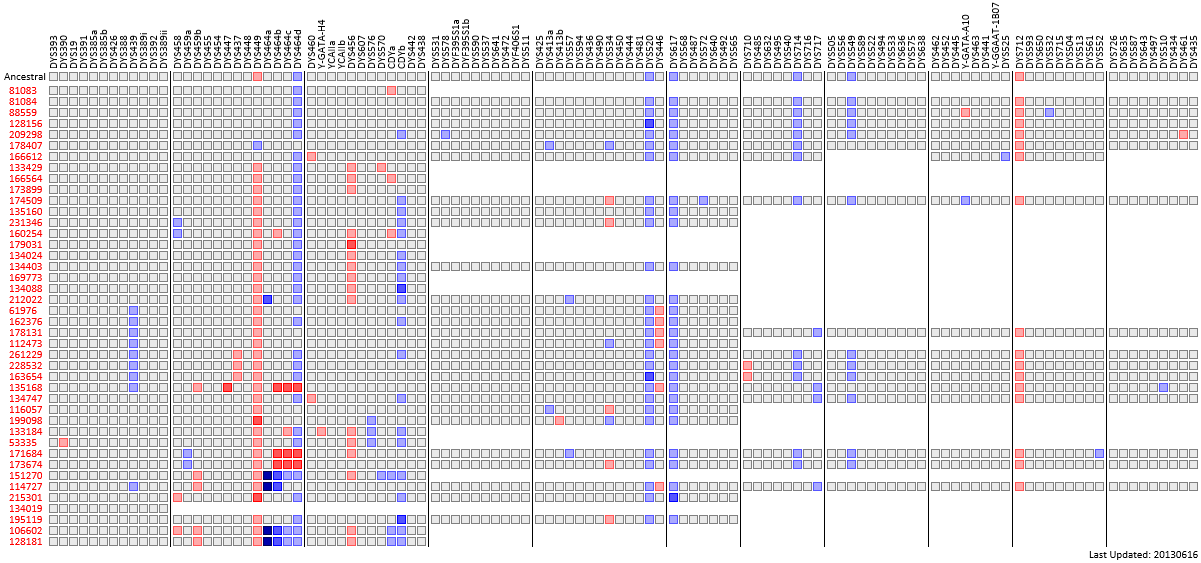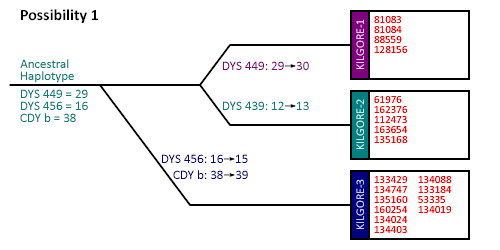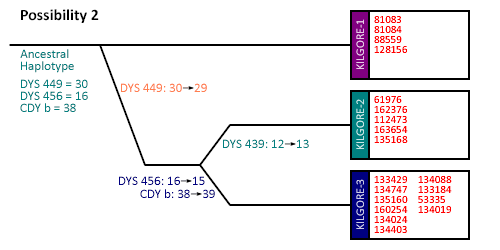Kilgore
Y-DNA Results
The Y-DNA results for the Kilgore men can be found in the FTDNA Kilgore project. All of the men are members of the Little Scottish Cluster except for those who are either "Ungrouped", or in the group labelled "Non Matching Kilgore Patricipants". Judging by the number of mutations present in the haplotypes, the MRCA of this surname likely lived in about the 15th century.


As the above table shows, there is some uncertainty as to the ancestral haplotype for this family. The modal value of DYS449 is definitely 29, but there are several members with 30, which is the ancestral value for the cluster. For DYS456 and CDYb about half the members have one value, and the other half a different value; they are correlated however.
Included in the above files is a man named McKeich (195119), and a couple men named Gilbert (106602, 128181). The results for the Gilbert men can be found in the Gilbert project in the Lawrence Co., TN Gilberts group. McKeich's haplotype looks very much like a typical Kilgore haplotype. The Gilbert men however have a very unusual value for DYS464. Fortunately, the value is not just unusual for Kilgore, it is unusual for all of R1b. It is not a coincidence that there is a Kilgore man (151270) who also has this unusal value of DYS464. There is likely a connection between the Gilbert's and the Kilgore's and so they have been included. I would very much like to see at least one of the Gilbert men upgrade to 67-markers to confirm that their DYS590 = 9.
Like Sloan, Kilgore is also a fairly old family. Unlike Sloan however, it is more difficult to try and guess at the pattern of mutations that have taken place in the Kilgore family over the centuries. One problem, is the uncertainty in the ancestral haplotype. Depending on the values of the unknown markers, there are several possibilities.
Below is one possible set of mutations, assuming that the ancestral marker values for DYS449 = 29, DYS456 = 16 and CDYb = 38.


